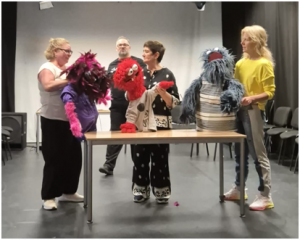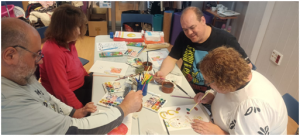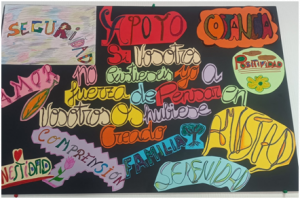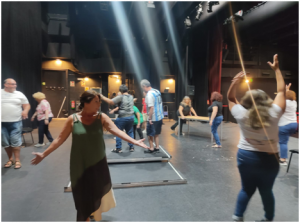The important role of art in the recovery process of young people with mental health problems
The prevalence of mental disorders continues increasing and causing considerable effects on the health of human beings and negative socioeconomic consequences. Therefore, prevention and intervention strategies are necessary as well as tools for innovative and effective treatment, for example the utilization of artistic disciplines.
Several studies support the use of art in therapeutic contexts, showing improvements in mood, concentration and emotional resilience. In addition, they promote autonomy and empowerment, offering the individual an active way to participate in his or her own emotional self-care learning. These disciplines do not replace psychological treatment but act as valuable tools that enhance the recovery process. Far from being mere recreational activities, expressions such as theater, painting and dance have become effective tools to enhance the development of emotional management and promote the integral wellbeing of people in situations of psychological vulnerability (Viera & Bautista, 2022).
Theater offers a safe space to explore emotions, analyze personal history and develop empathy with oneself. By assuming different characters, people can symbolically confront their own conflicts, which facilitates the understanding of themselves and others. In addition, working in a group strengthens social skills, a sense of belonging and confidence, especially in those suffering from emotional dysregulation (Rof & Giral, 2019).


It is very common for people to experience difficulty in identifying and describing with words unpleasant emotions, insecurities, fears or wounds. Through painting, the person can materialize what he or she thinks or feels and is able to reach some corners of that untraveled inner landscape. Selecting colors and shapes becomes an intuitive way to reorganize the inner chaos. In addition, when we put creative thinking and imagination into action, we are promoting cognitive stimulation, which is fundamental for problem solving and adaptive emotional management (Melany et al., 2023).


Body movement has a profound effect on the state of mind. Dance not only releases physical tensions, but also helps to recover the connection with the body, which is often affected when it has suffered an episode of psychological vulnerability. Through music, rhythm and body expression people can reconnect with their vitality, explore their identity and release repressed emotions in a safe way (Steven, 2022).


Art, in all its forms, has the power to transform pain into creation, silence into voice and confusion into meaning. Incorporating practices such as theater, painting, collage or dance into mental health programs not only expands therapeutic possibilities, but also humanizes the recovery process. In a world that often disconnects people from themselves and others, art appears as a bridge to reconnection and hope.
Association of family members and people with mental health problems — AFENES (Spain)
References
Melany, N. P., Reinaldo, E. S., & Marisel, A. L. (2023). La pintura como alternativa educativa para la prevención de la conducta adictiva. In SMADIC 2023.
Rof, C. B., & Giral, M. M. (2019). Prevención y tratamiento de los trastornos mentales a través del teatro: una revisión. Revista de psicología clínica con niños y adolescentes, 6(3), 76–87.
Steven, Y. Q. A. (2022). Sistematización de experiencias para mejorar la salud mental de estudiantes jóvenes por medio de danza.
Viera, Bautista (2022). Arte y dispositivos de salud mental. Reflexiones en torno a sus modos de implementación. Jornadas internacionales de investigación y formación en artes: producir conocimientos, transformar prácticas e imaginar mundos en el siglo XXI. Escuela de Humanidades, Universidad Nacional de San Martín, San Martín.
Ørjasæter, K., Stickley, T., Hedlund, M., & Ness, O. (2017). Transforming identity through participation in music and theatre: exploring narratives of people with mental health problems. International Journal of Qualitative Studies on Health and Well-being, 21(1).

